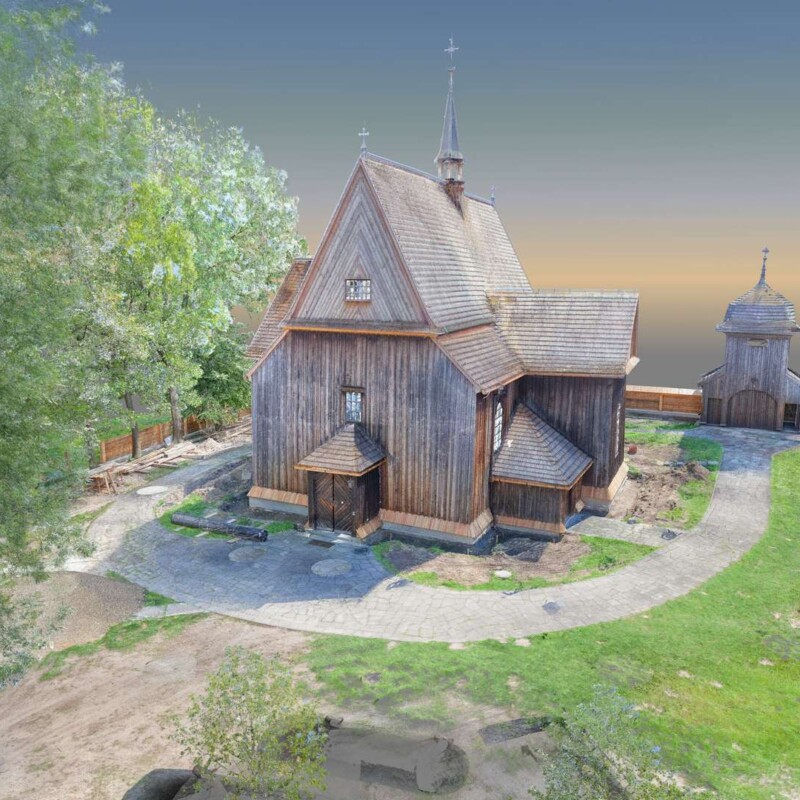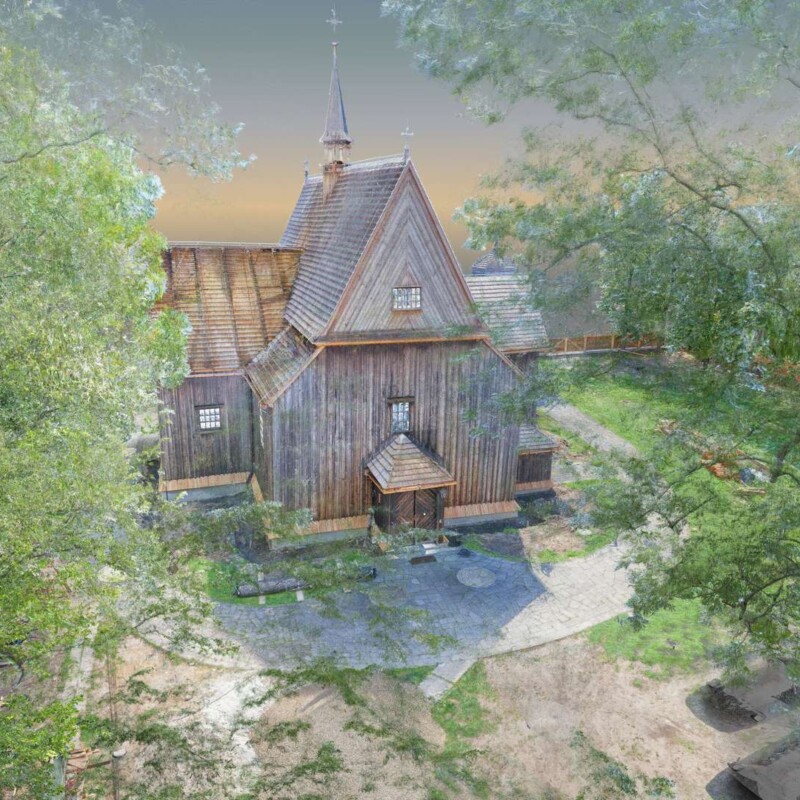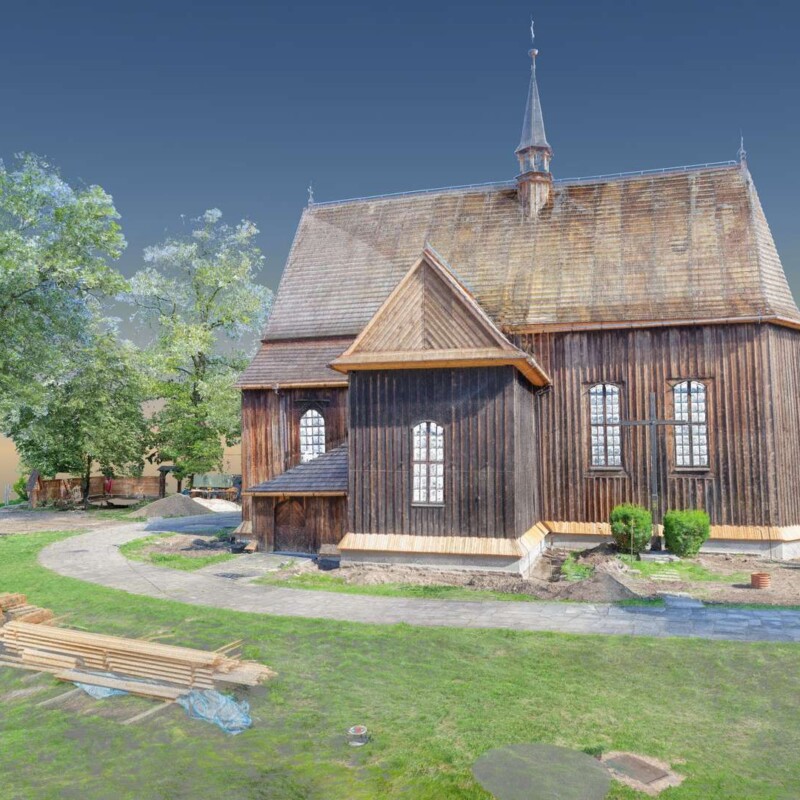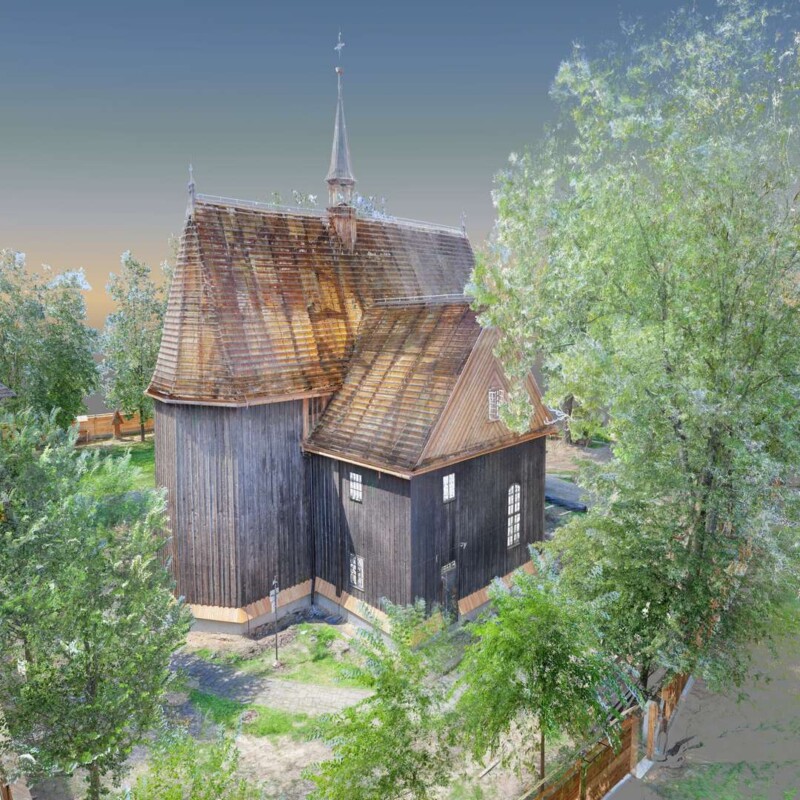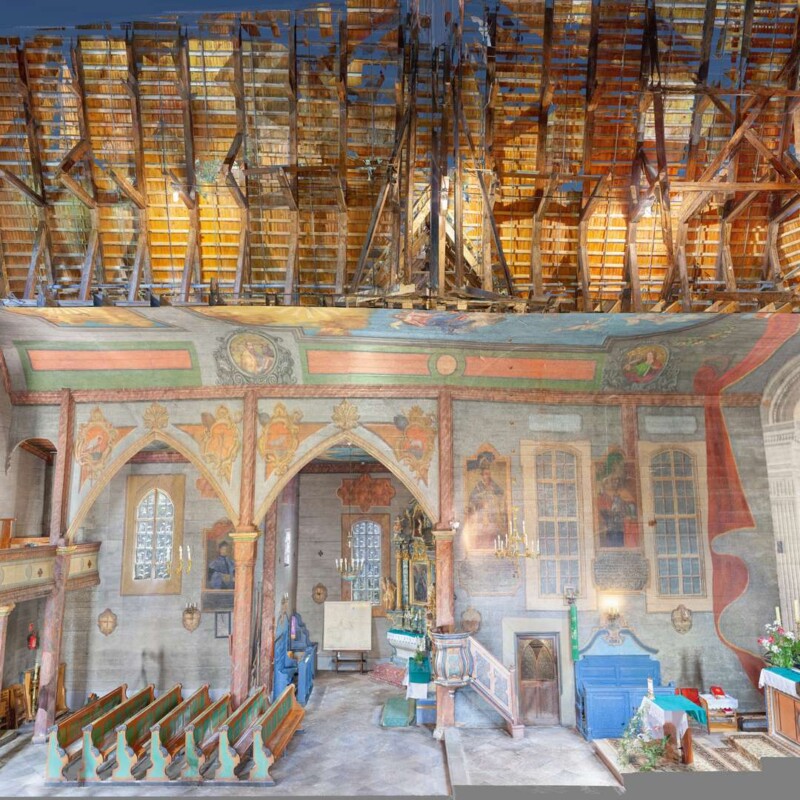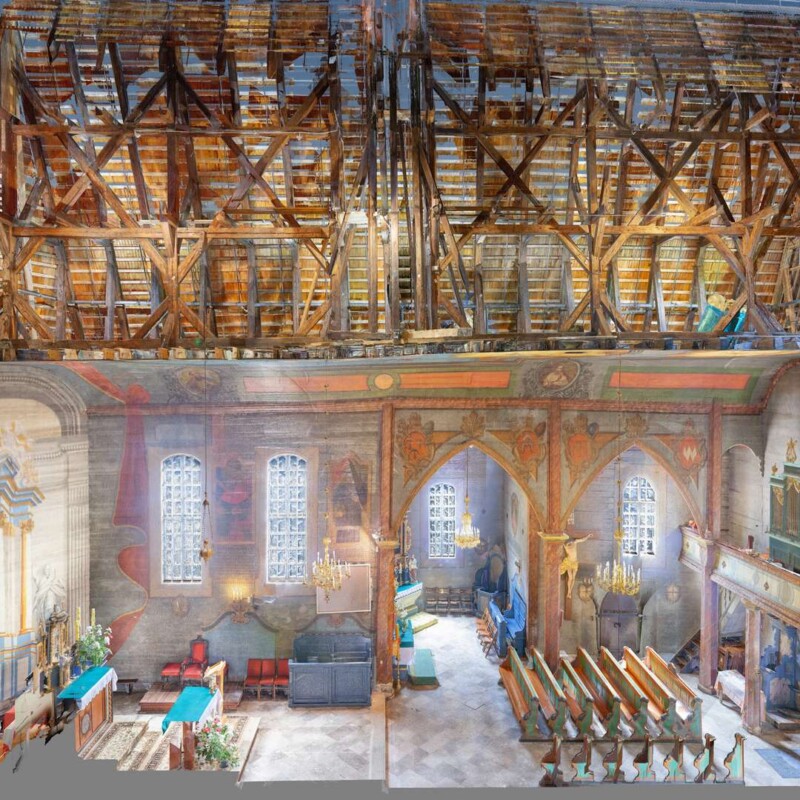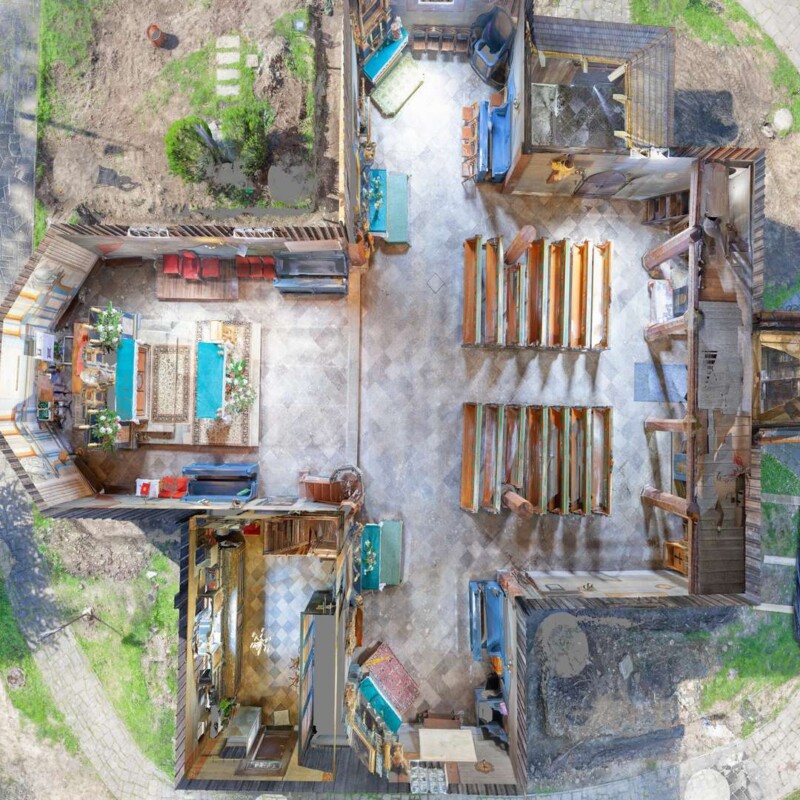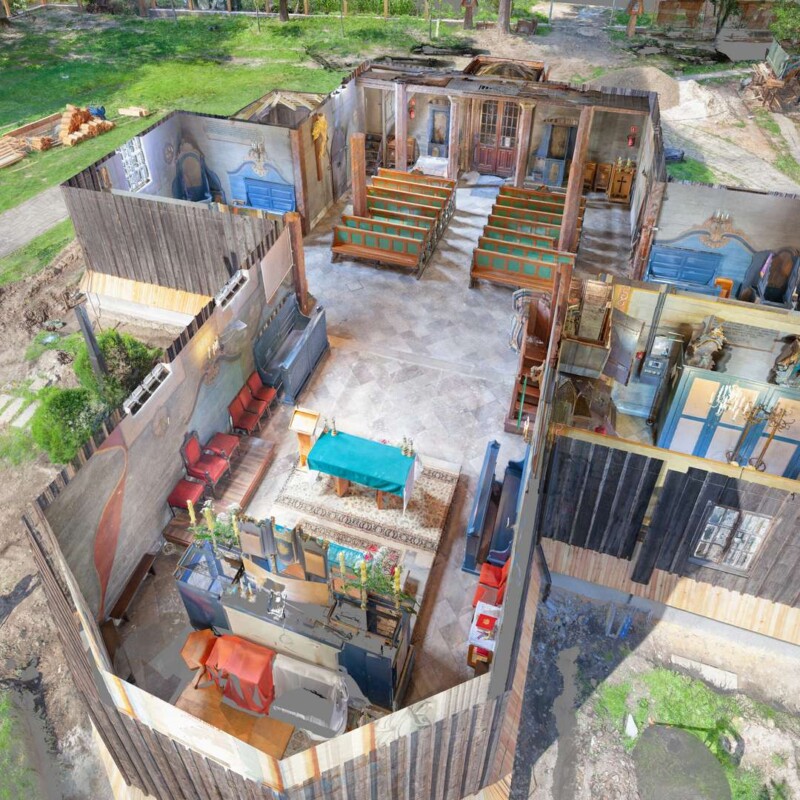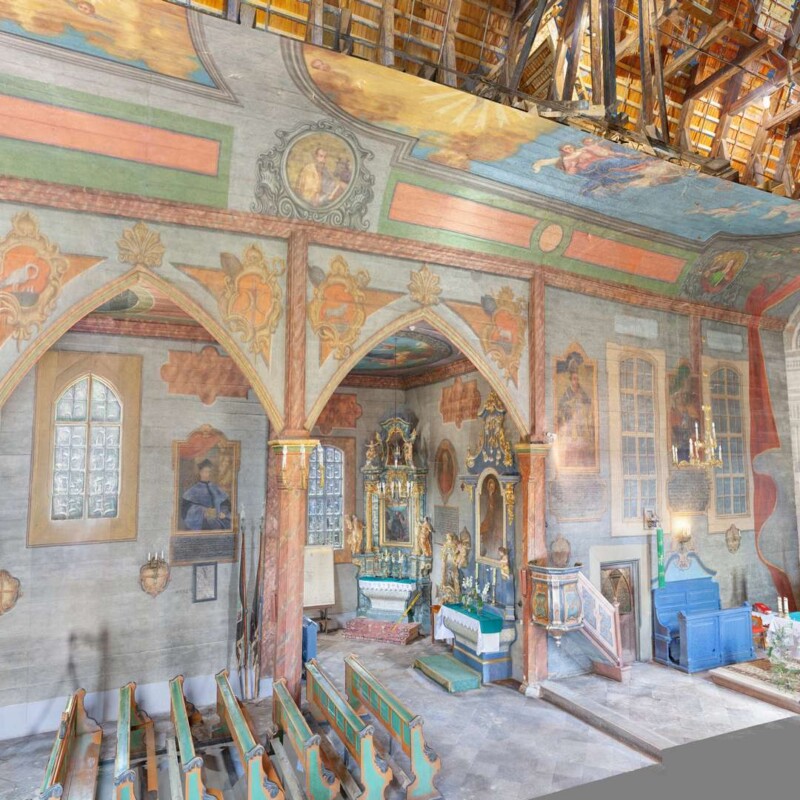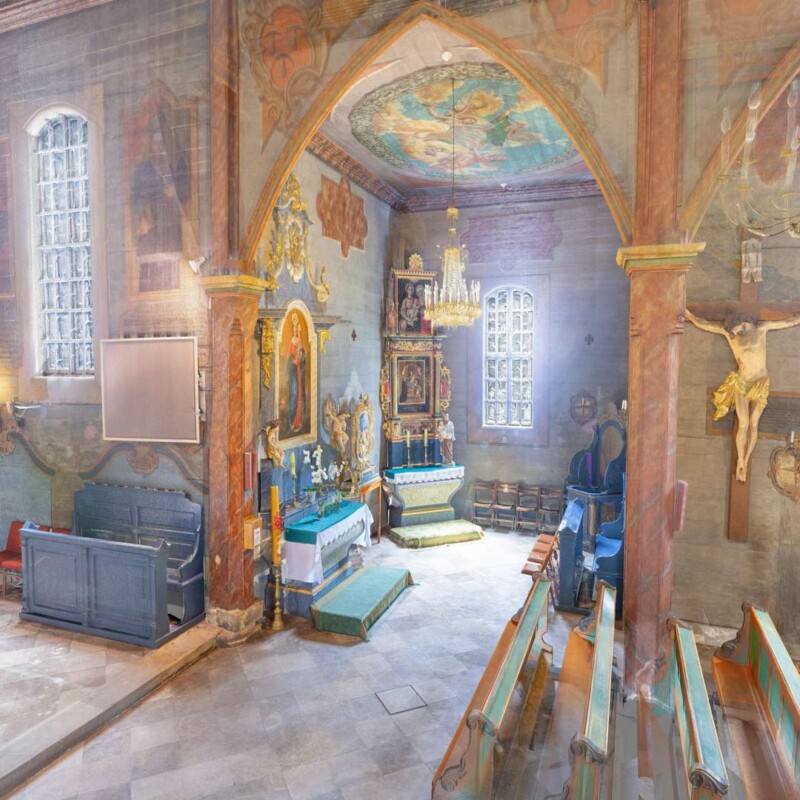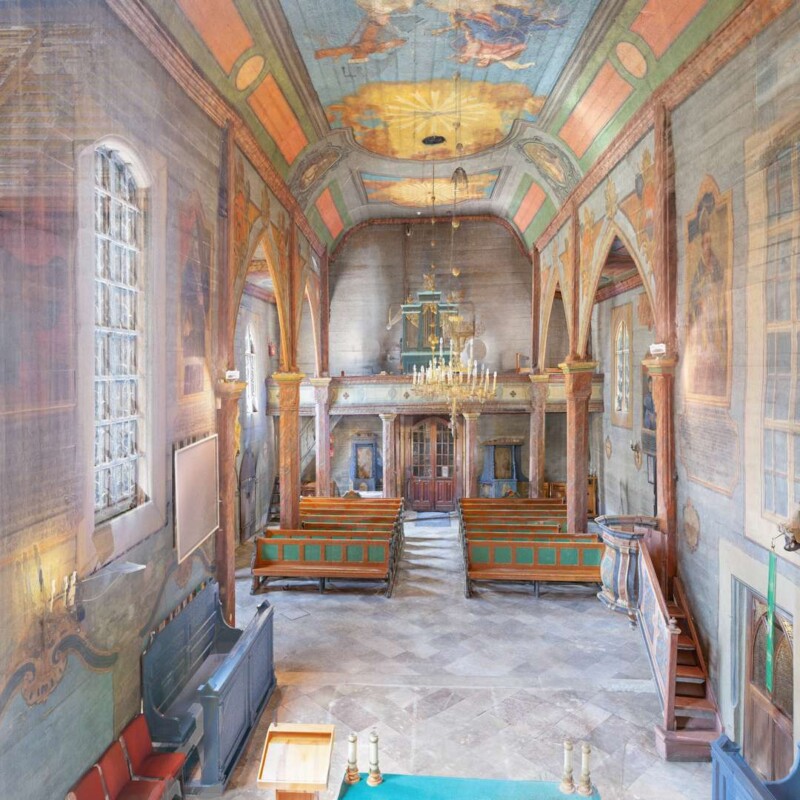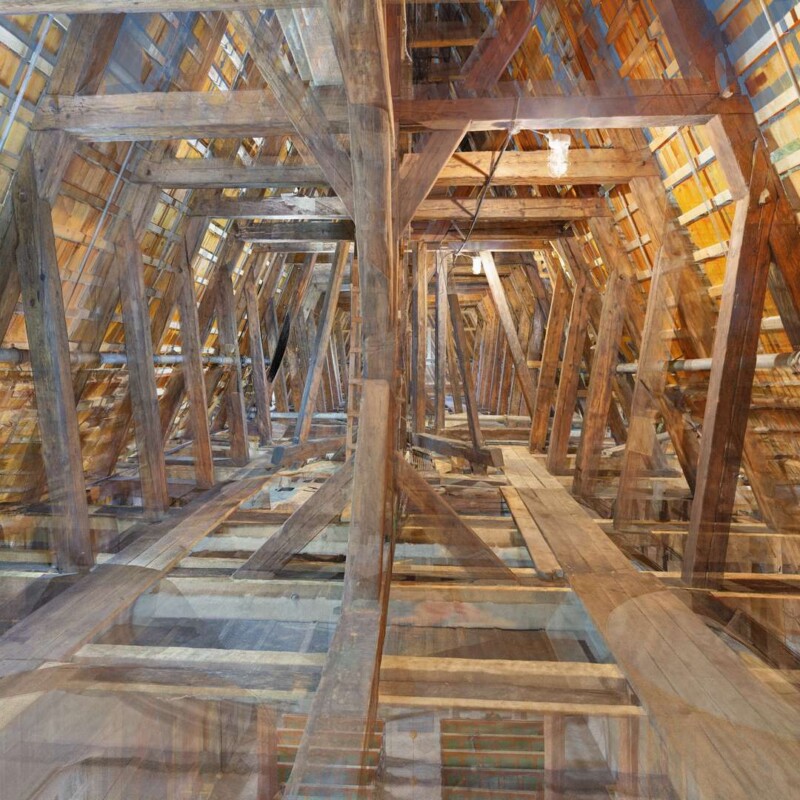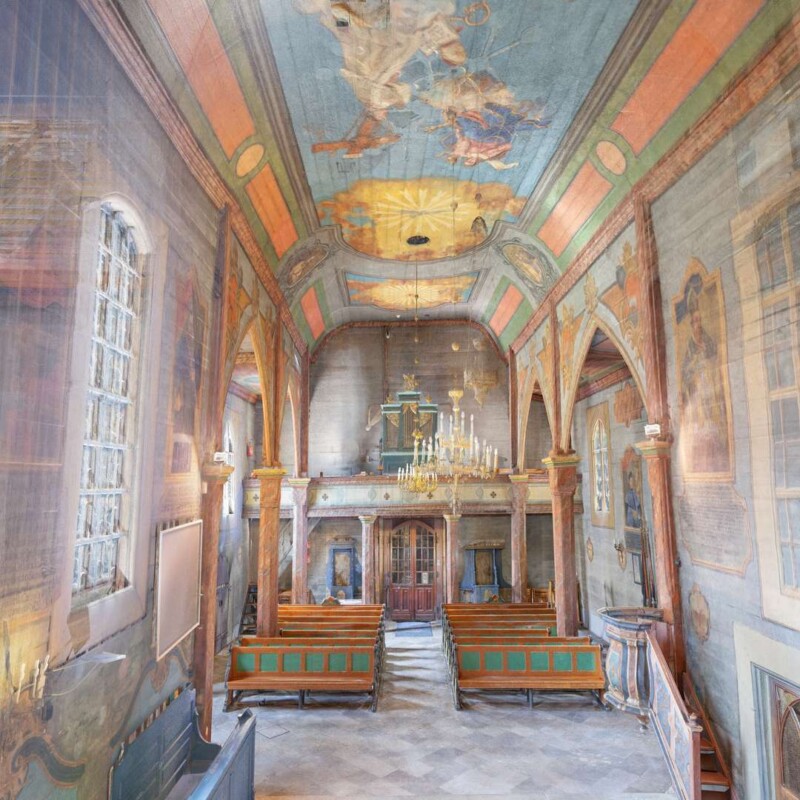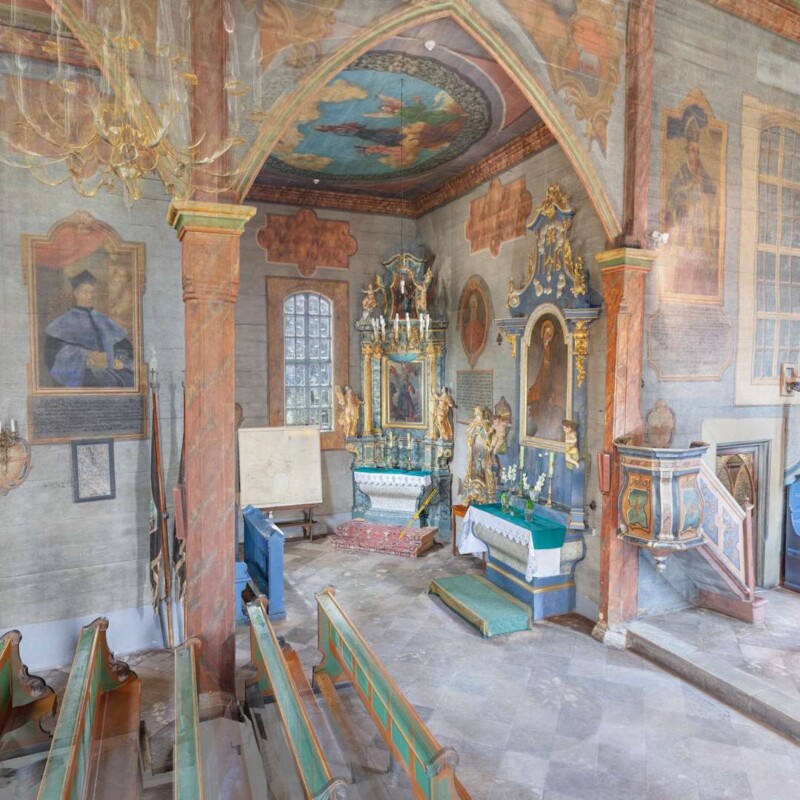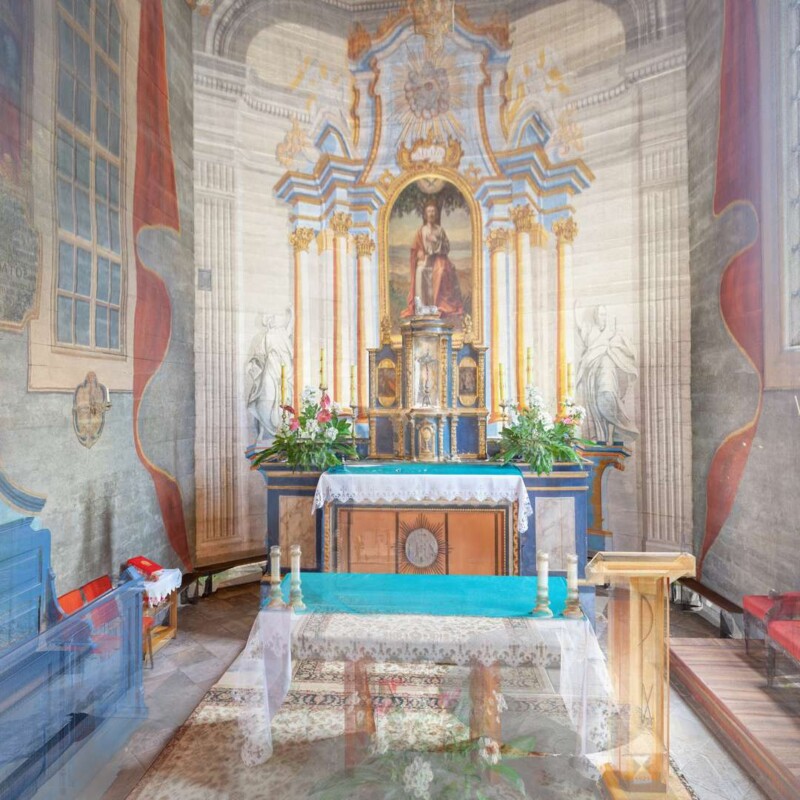St. Bartholomew Church, Kraków-Mogiła
The Church of St Bartholomew in Krakow – Mogiła, which stands in the neighbourhood of a well-known Cistercian monastery, is a magnificent example of a medieval rural parish church. The modest Gothic building was erected on this site at around the middle of the 15th century making it one of the oldest wooden sacral buildings in Poland. Interestingly, for such an old building, both the initiator and the builder of the church are still known. The former was the abbot of the nearby Cistercian monastery, Piotr Hirszberg of Biecz, and the latter was a local carpenter, Maciej Mączka, who later even received the title of Royal Carpenter. Mączka used the tried-and-tested method of log building in his construction of the church.
The walls were made of solid logs, stacked one on top of the other and connected in the corners using traditional joinery notches. The building consisted of two parts: the chancel, where the altar was placed, and from which mass is celebrated by the priest: and the nave, where the congregation gather and sit at pews.
The chancel was oriented to the east, where, as Christians believe, the Saviour will return at the end of the world. The nave, on the other hand, is distinguished by its unusual interior layout. High wooden pillars form pointed arcades which serve to divide the room into a central nave and two side aisles. St Bartholomew’s Church is the oldest wooden three-nave church in Poland.
The Gothic, two-part building stood unchanged until the 18th century, at which time it underwent some extension work. Large chapels were added to the nave on both sides, giving the church a cruciform plan. The interior also underwent some changes. It was then decorated and furnished in the exceptionally ornamental and theatrical Baroque and Rococo styles including some polychrome murals on the walls and the ceiling, the pulpit and the altars. In the 19th century vestibules were added and a small organ appeared in the choir.
Application – a virtual walk around the church
The church can be entered through a stout and almost quadrilateral black bell tower which forms part of the church’s boundary fence, with a gateway underneath the belfry. The wooden church is approximately 30 metres long, built for the most part on a simple rectangular plan. Above the segmented, unusual body of the church, is a soaring gable roof with a cupola housing a bell.
Two side chapels were added to the north of the nave. Both this roof and the other ones are covered with shingles – thin wooden tiles. The semi-circular top windows are tall, quite narrow, composed of many panes of glass. The interior impresses with a great composition of mural paintings covering the walls and ceilings. The figures of angels and saints, as well as coats of arms are painted to fit into the shapes of various structural elements, such as the arches of the arcades.
The human figures painted on the walls have been given painterly frames that are deceptively three-dimensional. The elements imitating architectural features have a mainly pink, blue and green colour scheme. Around the murals, for example, rectangular shapes have been painted, imitating stone slabs. All this illusionary decoration makes a very elegant overall impression, reminiscent of manor homes of the gentry. Some of the medallions depict bishops, saints and the learned.
On the ceiling of the presbyterium, there is a painting of St. Bernard and the Virgin Mary with Baby Jesus. The Mother of God is sitting on a cloud and is wearing a red robe with a blue coat. Below them, St. Bernard clad in a white robe is kneeling. A dark brown wooden cross is behind him. Above them – a white dove is flying. The vast area of the sky above the figures, occupying more than half of the picture, is illuminated by the light.
In the right chapel, on the ceiling, there is the ascension of St. Bartholomew painted. The work is done using pastel shades, characteristic for Rococo, and the faces of the figures are gentle. In the centre, against a blue background, on a yellow cloud sits a gray-bearded man wearing a dark green robe. The figure is surrounded by young angels who spread their feathery wings. In their outstretched hands, they hold knives covered with blood with the use of which the executioners of Bartholomew sent him to heaven. The whole scene is surrounded by oval painting of a wreath of floral elements.


